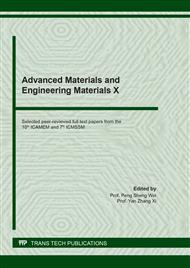p.464
p.473
p.480
p.485
p.501
p.506
p.512
p.519
p.525
Contact-Fatigue Resistance of PM Steel with Hard Coatings
Abstract:
Hard coatings applied by the Physical Vapor Deposition method often provide very good mechanical properties, especially when applied to metal parts that are mentioned to withstand certain level of wear. In this study, TiN coating combined with deep rolling were applied to the investigated steel samples, prepared by powder metallurgy and subjected to contact-fatigue stress. Computational analysis of stress states in samples by the finite element method helped to reveal the behavior and formation of fatigue failures when loading samples. The results, processed in the form of fatigue curves, probabilistic Weibull curves using metallography and electron microscopy, showed a positive effect of the used coatings and their combination with other surface treatments on the contact-fatigue strength of the examined samples. Microscopic study also showed the different mechanisms of crack formation and of crack propagation rate due to contact loading of material with a laser hardened surface, which has an obvious impact on material lifetime.
Info:
Periodical:
Pages:
501-505
Citation:
Online since:
November 2021
Authors:
Price:
Сopyright:
© 2021 Trans Tech Publications Ltd. All Rights Reserved
Share:
Citation:


